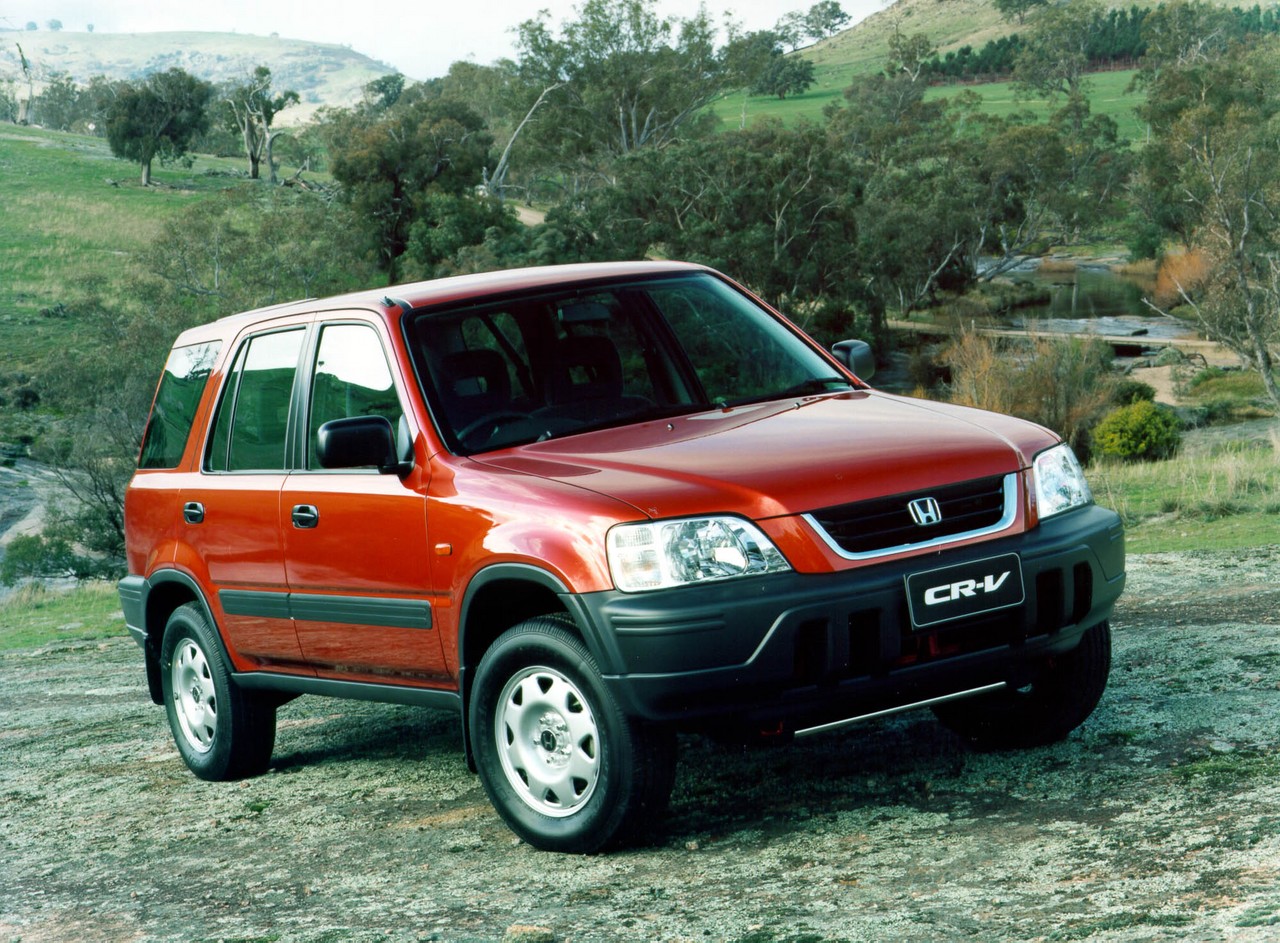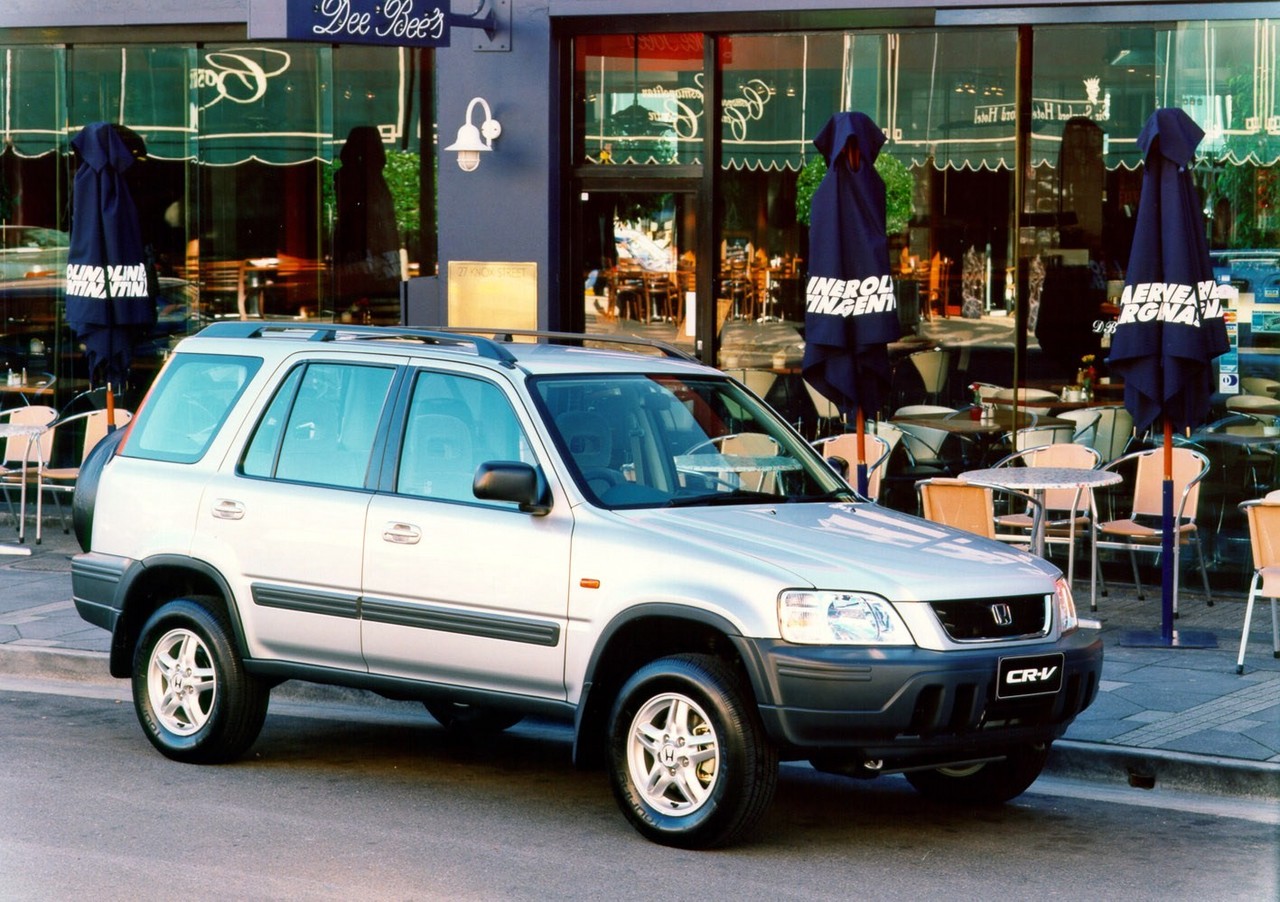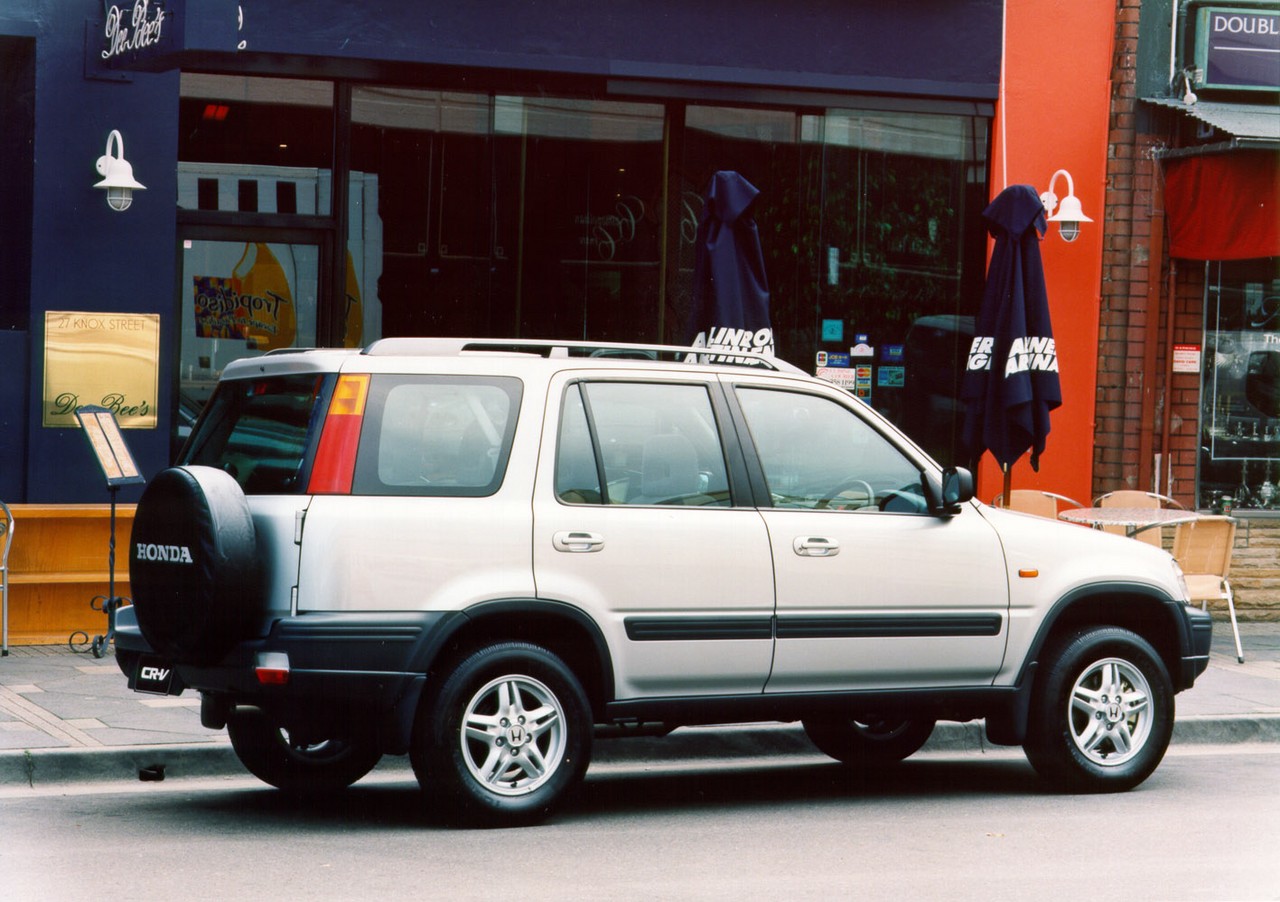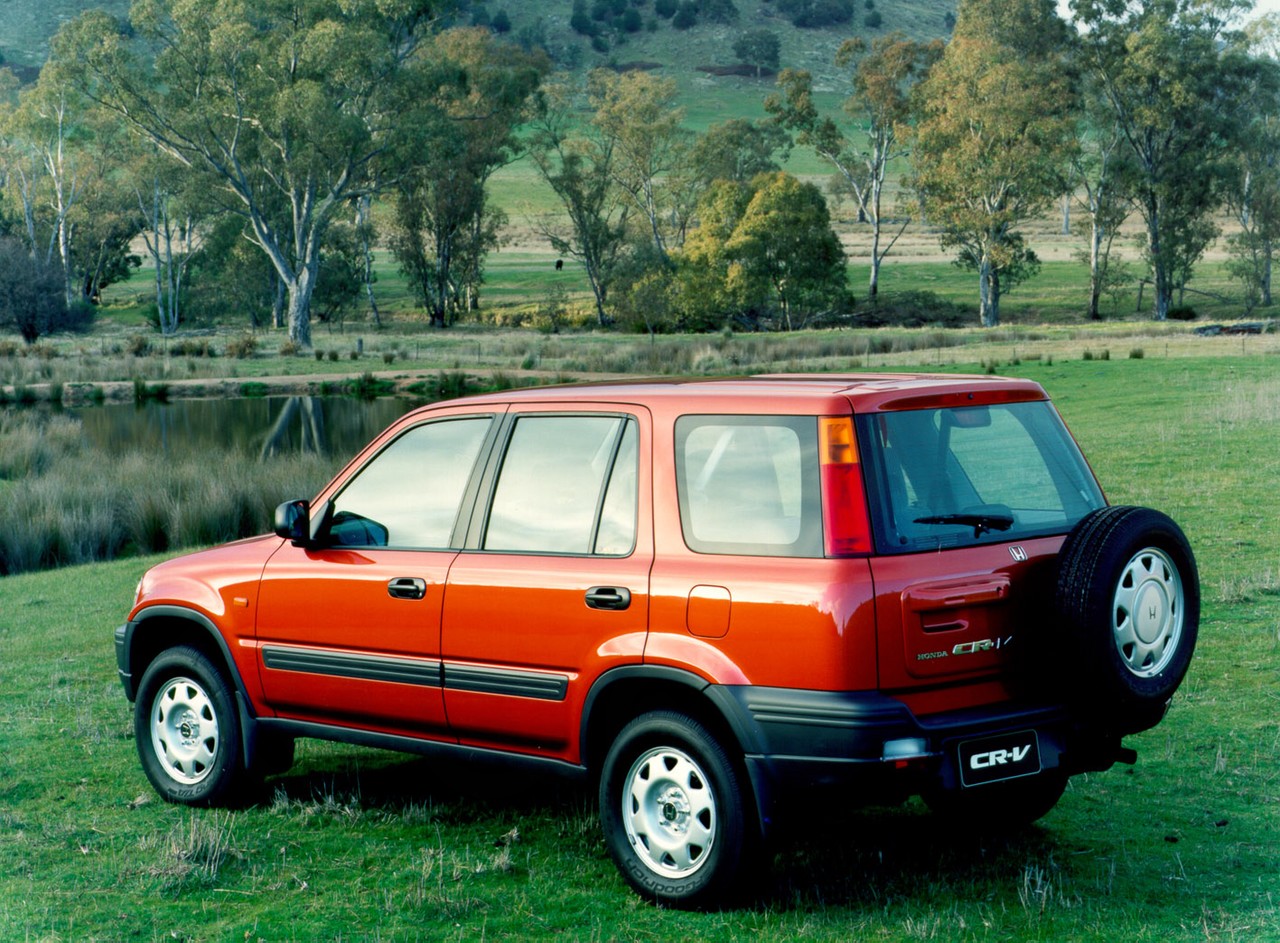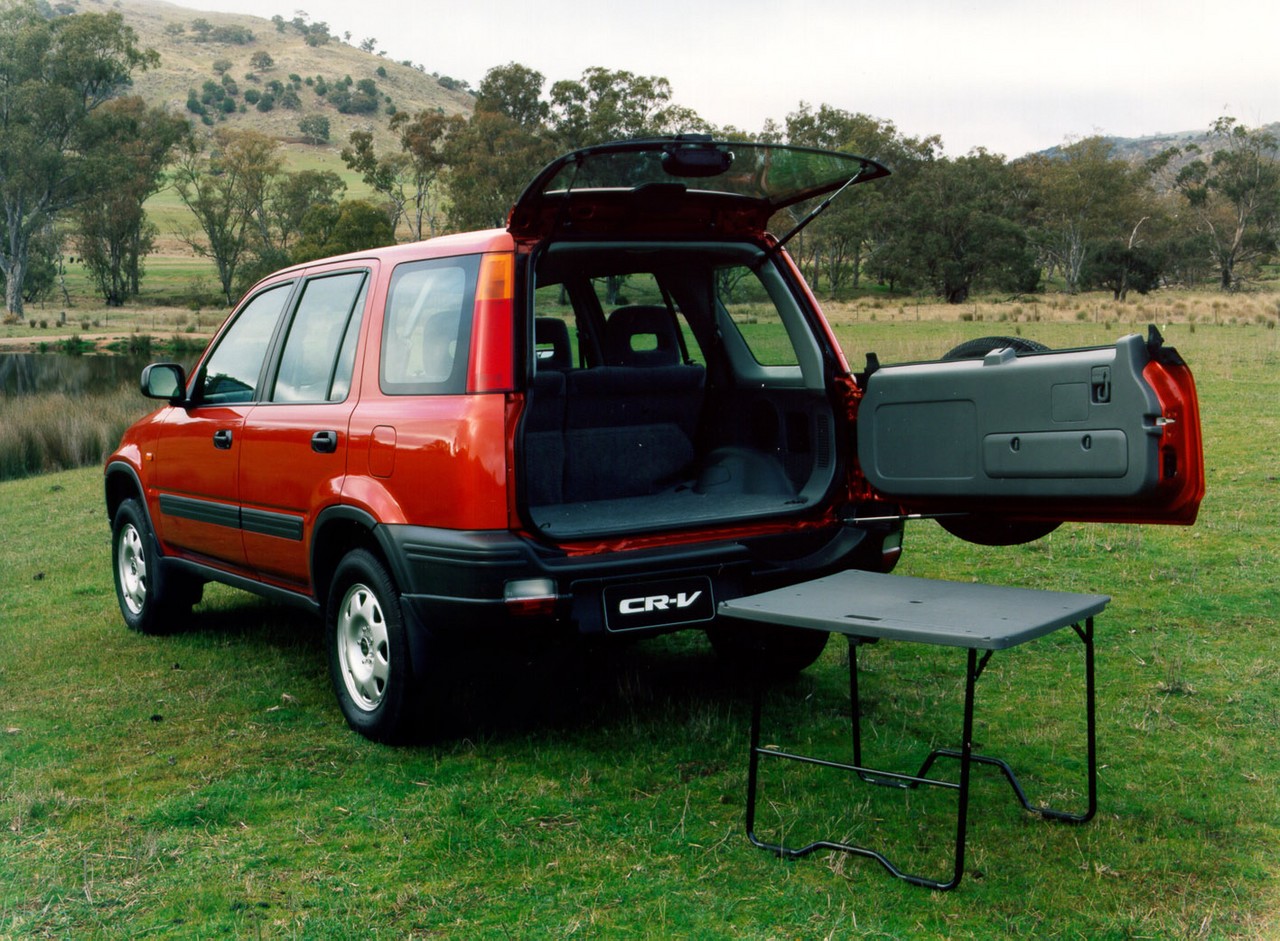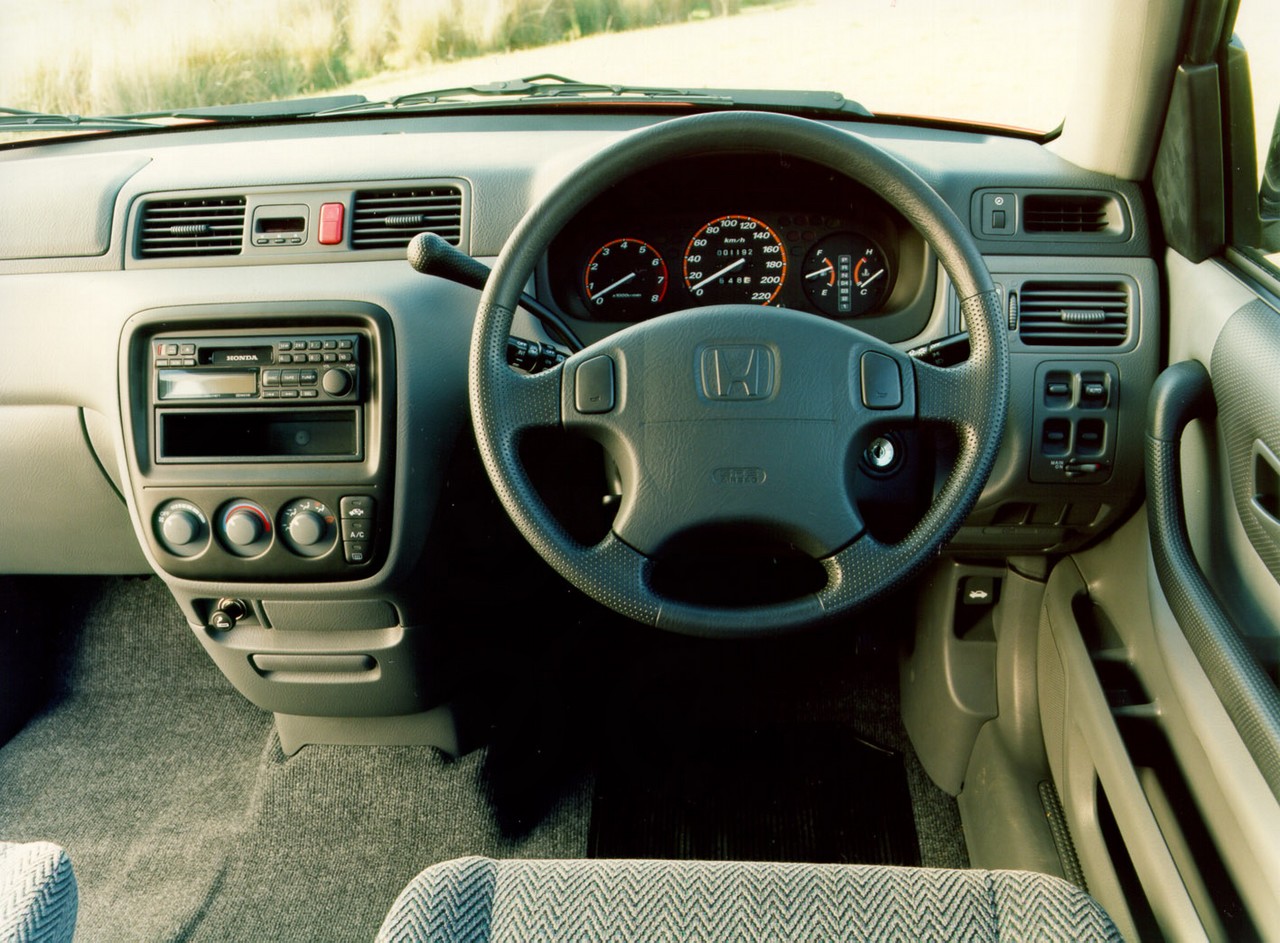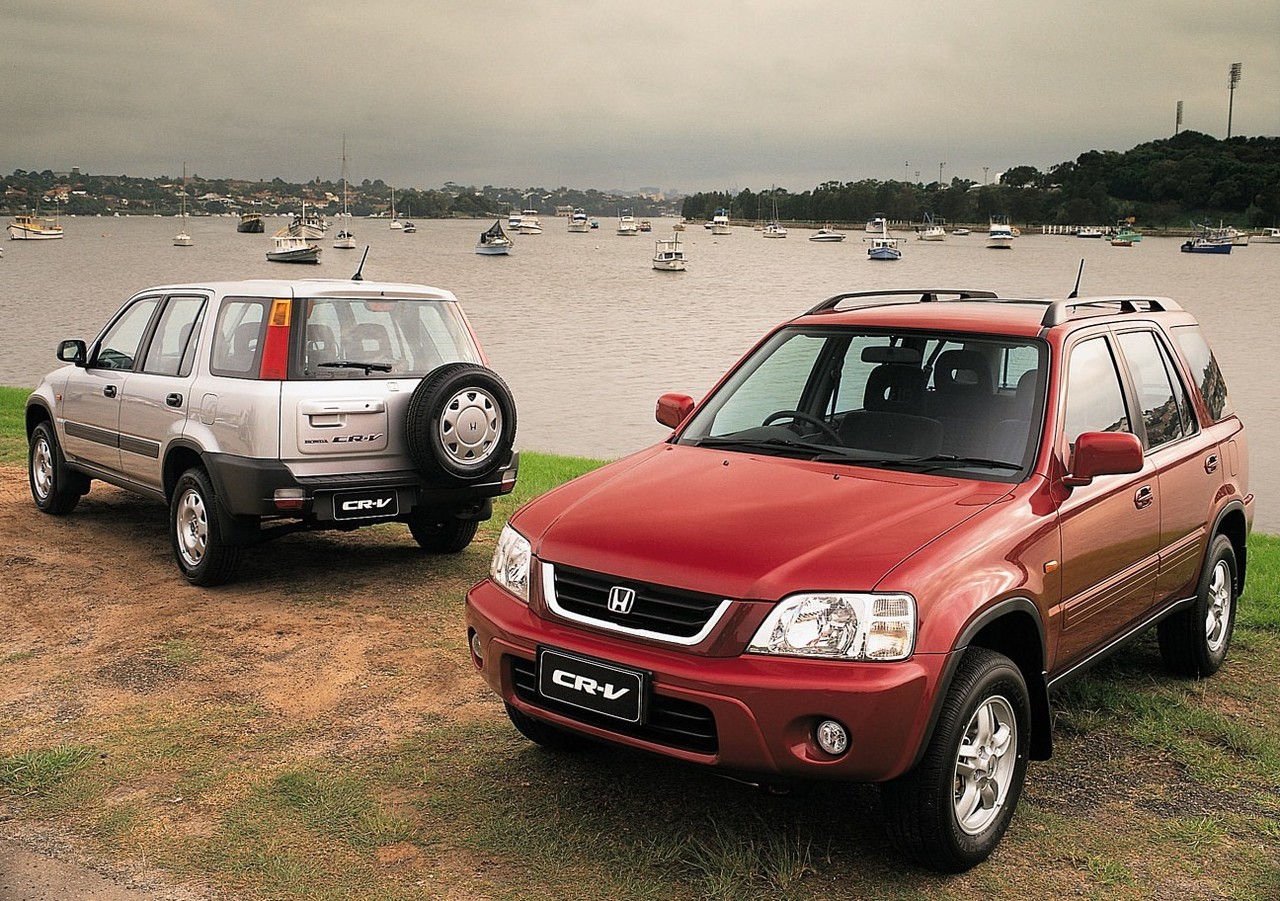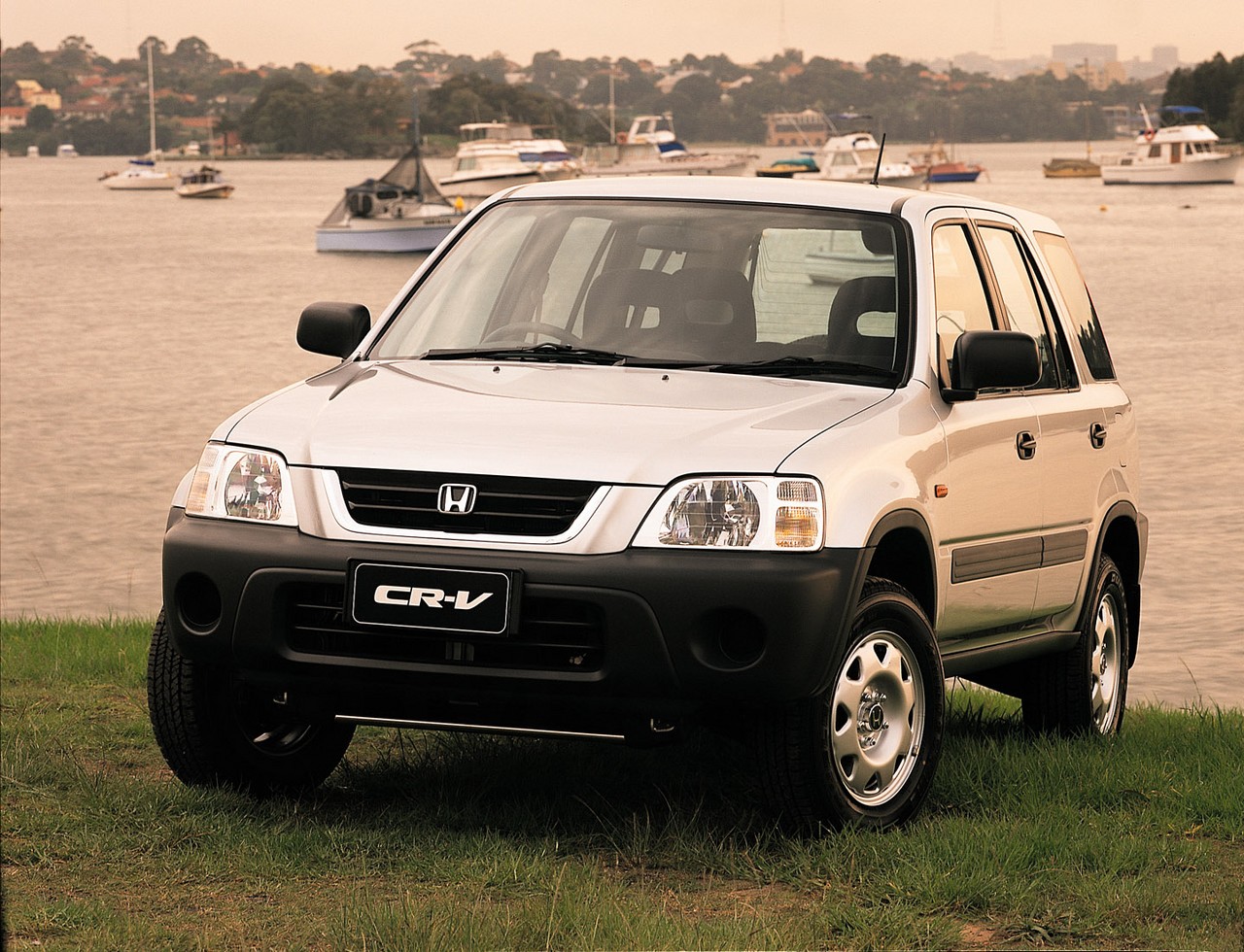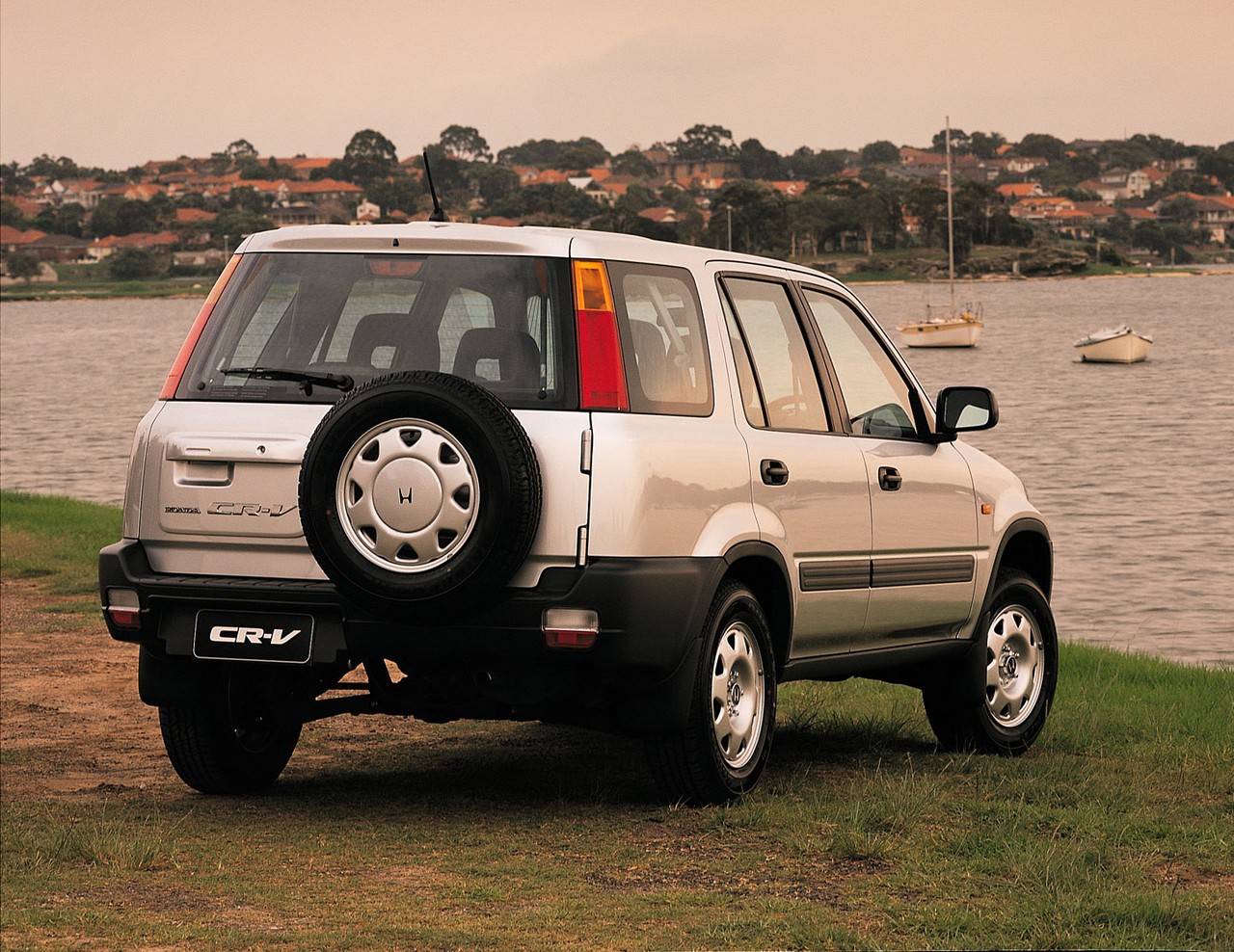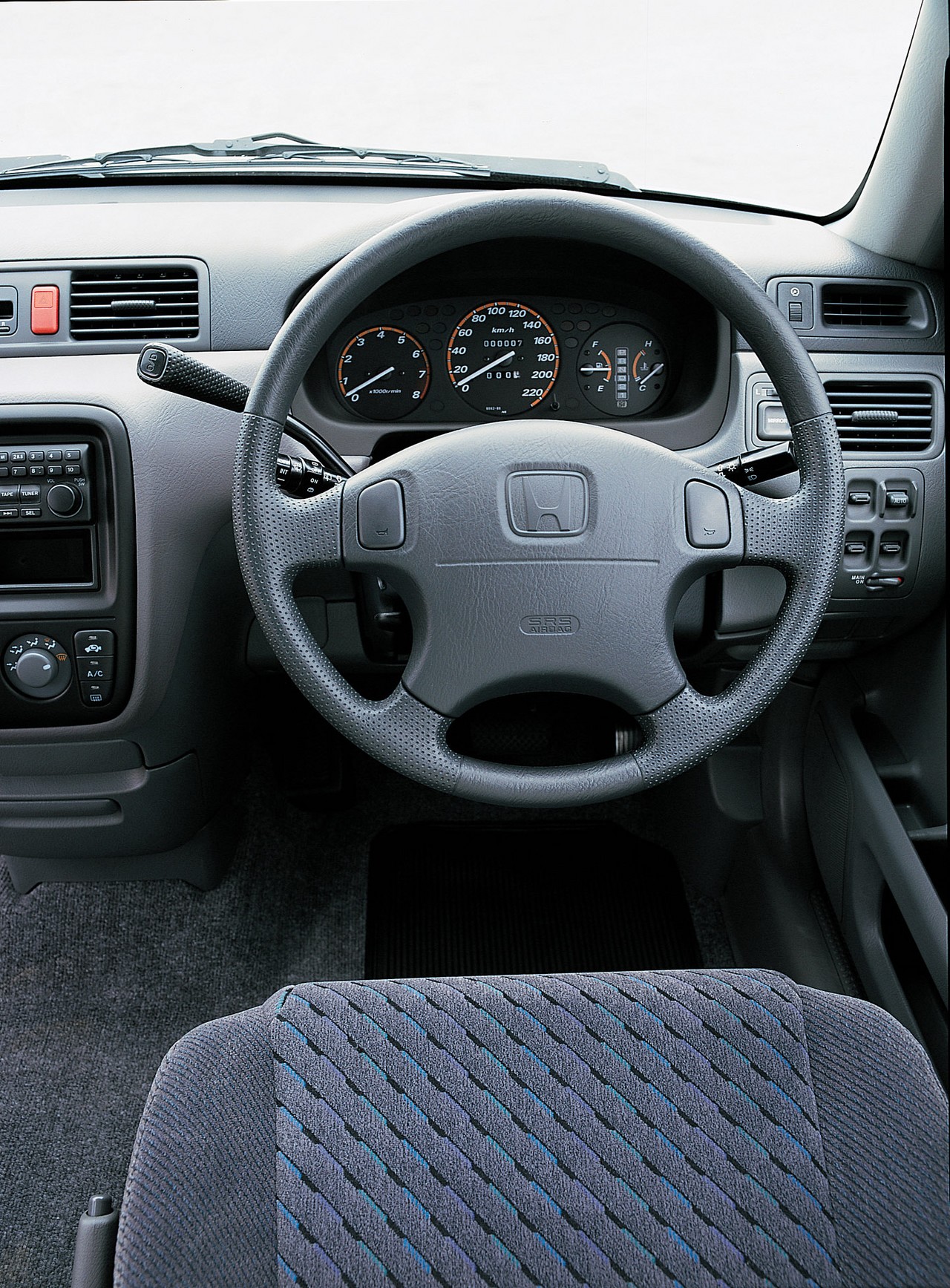
- Comfortable ride
- Refined manual transmission
- Spacious interior and cargo bay
- High standard of fit and finish
- Engine lacks low-rev torque
- Front seats lack thigh and lateral support
- Body roll when cornering
- Space needed to open tailgate
Honda RD1.I CR-V (1997-98)
Overview
Released in September 1997, the Honda RD1 Series I (RD1.I) CR-V was a compact, all-wheel drive SUV. Manufactured at Honda’s Sayama plant in Japan, the CR-V was powered by a 2.0-litre four-cylinder petrol engine that was mated to either a five-speed manual or four-speed automatic transmission; the latter had ‘Grade Logic Control’ which would hold a lower gear while climbing a steep grade and also downshift when traveling downhill for greater engine braking.
B20B engine
The CR-V was powered by Honda’s four-cylinder B20B engine which had double overhead camshafts and four valves per cylinder. Furthermore, all four iron cylinder liners were cast into a sequential unit for a more compact engine block by eliminating the need for conventional alloy separation between the cylinders.
Suspension and dimensions
The CR-V had a monocoque chassis with double wishbone suspension front and rear. The CR-V was 4520 mm long, 1750 mm wide, 1675 mm tall and had a 2620 mm long wheelbase. Inside, there was a walk-through facility between the front and rear seats and an underfloor wet storage compartment.
| Engine | Trans. | Peak power | Peak torque | |
|---|---|---|---|---|
| CR-V | 2.0-litre petrol I4 | 5sp man., 4sp auto |
94 kW at 5500 rpm | 182 Nm at 4500 rpm |
‘Real Time’ all-wheel drive
The CR-V was fitted with Honda’s ‘Real Time’ all-wheel drive system which utilised a multi-plate central clutch and two separate pumps driven by the front drive shaft and the rear differential. In normal conditions, the engine’s torque was directed to the front wheels. If, however, there was a difference in the rotating speed of the front and rear axles – as would occur if the front wheels lost traction– the pumps would engage the multi-plate clutch to transfer torque to the rear axle.
When braking, the all-wheel drive system would disengage to enable the ABS to function (where fitted).
Safety equipment
Standard safety equipment for the RD1.I CR-V included dual front airbags.
Features: CR-V
Standard features CR-V included a four speaker sound system with a radio and cassette player, air conditioning, 50/50 split and folding rear seats, remote central locking, power windows and mirrors, a tilt adjustable steering column, remote tailgate opener and an immobiliser.
1998 CR-V 50th Anniversary
In August 1998, a limited-run 50th Anniversary edition was released. Compared to the standard CR-V, the 50th Anniversary editions were further equipped with ABS and featured alloy-wheels, a height adjustable driver’s seat, a sunroof, roof rails, a spare wheel cover and body-coloured door handles. Inside, the 50th Anniversary editions also had a storage tray under the front passenger seat and seat back pockets.
Honda RD1.II CR-V (1999-01)
Overview
Released in March 1999, the RD1 Series II (RD1.II) CR-V introduced an expanded range that consisted of standard and Sport variants. The RD1.II CR-V was also more powerful due to a revised air intake system and offered improved occupant protection as the front body structure provided a more progressive front crumple zone.
Visually, the RD1.II CR-V could be identified by its new bumpers and rear-mounted micro radio aerial. Inside, there were new seat fabrics, fold-out cupholders in the rear doors and models with automatic transmissions had a fold-down front passenger armrest; these automatic models also had an ‘overdrive’ button on the end of the steering-column gear lever which enabled easy switching between third and fourth gears.
| Engine | Trans. | Peak power | Peak torque | |
|---|---|---|---|---|
| CR-V, CR-V Sport |
2.0-litre petrol I4 | 5sp man., 4sp auto |
108 kW at 6300 rpm | 182 Nm at 4500 rpm |
Safety equipment
Compared to its RD1.I predecessor, standard safety equipment for the RD1.II CR-V was unchanged; the Sport variant, however, was further equipped with ABS.
Features: CR-V and CR-V Sport
Standard features for the RD1.II CR-V were also unchanged. The CR-V Sport, however, was distinguished by its 15-inch alloy wheels, front fog lights, roof rails, a power sunroof and hard spare wheel cover. The Sport variant could also be identified by its body-coloured bumpers, mirrors and door handles.
2001 CR-V Classic and CR-V Sport Classic
In April 2001, limited-run Classic editions were released. Compared to its standard counterpart, the CR-V Classic was fitted with 15-inch alloy wheels, an in-dash CD player and hard spare wheel cover. The CR-V Sport Classic, however, featured a six-disc in-dash CD player, side step set, cross bar set, X-bar foot set and luggage cover.
Related links
